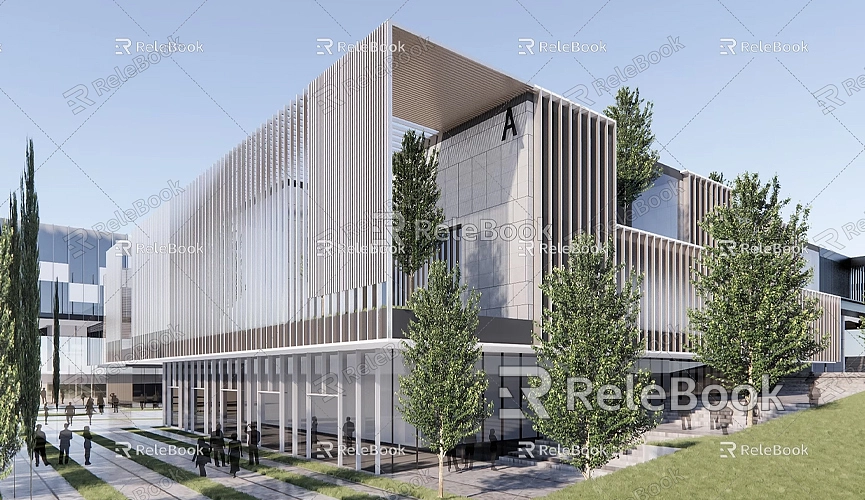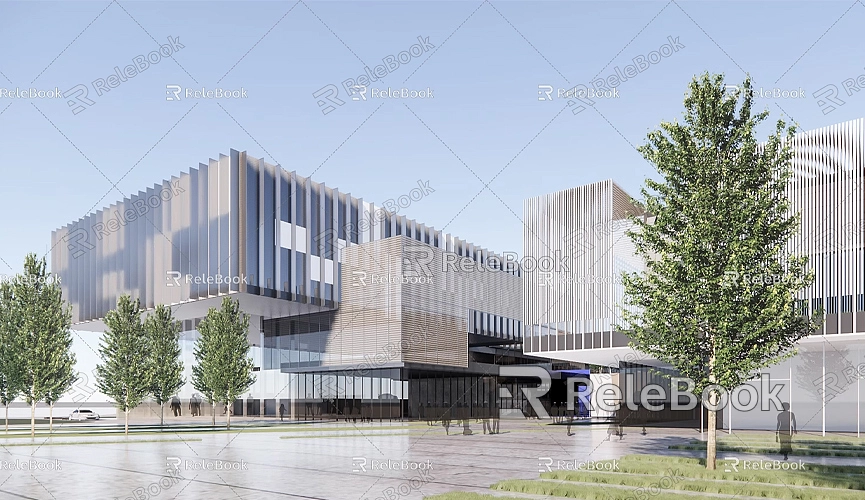How to Change Background in SketchUp Model
When using SketchUp for 3D modeling, the background of your model may not directly affect its structural design, but it does significantly impact the presentation. An appropriate background can make your model appear more professional and better convey the design concept and atmosphere. Often, when creating architectural, interior design, or product models, changing the background color or adding a background image can enhance the overall display, making the design feel closer to real-world settings. This article will detail how to change the background in SketchUp models, including how to adjust background colors and add custom background images.
Why Change the Background of a SketchUp Model
SketchUp's default background is typically a simple gradient designed to help users quickly understand the spatial relationship between the ground and sky. While this setup is sufficient for basic design needs, many users desire more customization options. For instance, if you want to showcase an outdoor architectural model, setting a blue sky with clouds as the background can make the building appear more realistic. In product design, a pure white background might be necessary to highlight the details and contours of the product.

Regardless of your needs, changing the background can enhance the visual impact of your model. Let’s look at how to do this in SketchUp.
Changing the Background Color
If you just want to adjust the background color without adding a complex image, you can do this by modifying the style settings in SketchUp. This is the most straightforward and commonly used method.
Steps:
1. Open SketchUp and load your model, ensuring that the basic design is complete.
2. In the menu bar, go to “Window” and then click on “Styles.”
3. In the “Styles” panel, you will see various style options. Click on the “Edit” tab, then find the small square icon that represents “Background Settings.”
4. In the “Background Settings,” you can directly select your desired background color, either a solid color or a gradient.
5. After making your adjustments, click “Apply.”
This method allows you to quickly change the background color, which is helpful for product designs or specific architectural styles.
Adding Custom Background Images
In addition to changing to a solid color background, you might want to add a background image to your SketchUp model, such as a cityscape, natural scenery, or other environments relevant to your design. To do this, you need to import the background image into SketchUp.

Steps:
1. Again, open SketchUp and load your model.
2. In the top menu, select “File,” then click on “Import.”
3. In the file type selection, choose “Image,” and then select the image you want to use as a background.
4. Once the image is imported, you can freely drag and adjust its position to ensure it appears correctly behind your model.
5. If needed, you can also adjust the image’s transparency to help it blend better with the model.
Importing an image as a background can help designers showcase how a model fits within real-world settings, such as how a building looks in an urban environment or how furniture is arranged in a room. A realistic environmental background allows viewers to better understand the practical application of the design.
Using the "Scenes" Feature
SketchUp also has a very useful feature called “Scenes.” This feature not only saves specific viewpoints of the model but also records background settings. By creating different scenes, you can use multiple backgrounds within the same model and switch between them quickly for presentations.
Steps to Use Scenes:
1. First, set the desired background (whether color or image), then adjust the view to the angle you want to showcase.
2. In the “Window” menu, select “Scenes,” then click “Add Scene.”
3. You will see the current view and background settings saved as a scene. If you need to display different backgrounds, repeat this step to set various backgrounds and viewpoints, adding new scenes as needed.
4. The scenes panel allows you to easily switch between different background settings for demonstration.
This feature is ideal for designers who need to present the same model in various environments, saving time on repetitive background and viewpoint adjustments.
Advanced Background Settings: V-Ray Plugin
For users seeking more refined rendering effects and complex backgrounds, consider using rendering plugins like V-Ray. V-Ray not only allows you to add beautiful backgrounds in SketchUp but can also simulate highly realistic lighting and shadow effects, making your design model look more professional and lifelike.
Steps to Add Background with V-Ray:
1. Install the V-Ray plugin in SketchUp.
2. Open V-Ray’s “Material Editor,” and in the “Environment” options, you can add an HDRI image as a background.
3. HDRI is a special type of panoramic image that simulates real environmental lighting effects, adding background and enhancing the overall light quality of the model.
4. Adjust the HDRI brightness and direction to integrate it well with your model.
This method is an excellent choice for users who want to showcase their designs through high-quality rendering. If you need many high-quality 3D textures and HDRI while creating models and virtual scenes, you can download them for free from [https://textures.relebook.com](https://textures.relebook.com).
Tips for Better Integration of Background and Model
When adjusting the background, a few tips can help you achieve a more natural combination of the model and background.
- Adjust Brightness and Hue of Background Images: If the background image is too bright or too dark, you can adjust its brightness and contrast to match the overall style of the model. This can help avoid noticeable color differences between the background and the model.
- Choose Appropriate Angles and Proportions: When adding a background image, pay attention to the perspective and proportion of the image. If the perspective of the background image does not match that of the model, the scene will appear unnatural. So, adjust the image’s position and size to ensure it aligns with the model's perspective.
- Use Shadows and Lighting Effects: Utilize the lighting settings in SketchUp to adjust the shadows of the model, allowing it to appear more three-dimensional against the background. If the background is an outdoor scene, simulate the direction of sunlight to ensure the lighting and shadows of the model align with the background.
Whether it's a simple color background, a complex custom image, or even an advanced HDRI environment, adjusting the background settings in SketchUp can significantly enhance the presentation of your model. Changing the background not only helps your design stand out but also better communicates the design concept and atmosphere. The functionality in SketchUp is easy to use, and with a few attempts, you can enhance your models considerably.
If you need high-quality 3D textures and HDRI while creating models and virtual scenes, remember to visit [https://textures.relebook.com](https://textures.relebook.com) for free downloads. If you need exquisite 3D models, check out [https://3dmodels.relebook.com](https://3dmodels.relebook.com) for downloads, as Relebook provides a wealth of premium 3D resources. These resources not only enrich your models but also add creativity and possibilities to your designs.

